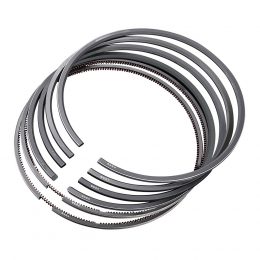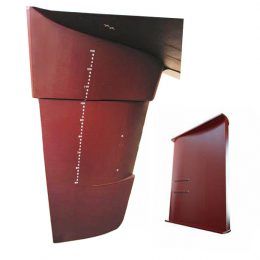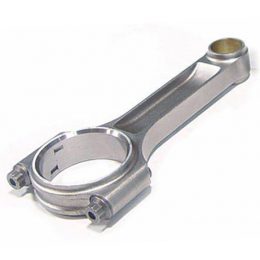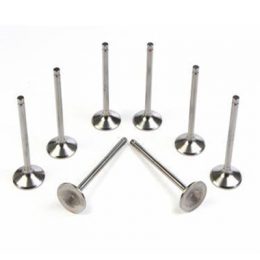Marine Engine Connecting Rods: A Complete Buyer’s Guide
Connecting rods are essential components of marine engines. They transmit the power from the pistons to the crankshaft, enabling the engine to turn the propeller shaft and move the boat. The reliability and durability of connecting rods are crucial in ensuring that marine engines operate efficiently and effectively.
This buyer’s guide will provide a comprehensive understanding of marine engine connecting rods, the factors to consider when buying them, and the top brands in the market.
2. What are Marine Engine Connecting Rods?
Connecting rods are engine components that connect the pistons to the crankshaft. They transmit the force generated by the combustion of fuel to the crankshaft, which then turns the propeller shaft and propels the boat. Connecting rods are typically made of steel, aluminum, or titanium, depending on the type of engine and its application.
3. Types of Connecting Rods
There are two types of connecting rods available in the market: cast connecting rods and forged connecting rods.
Cast Connecting Rods
Cast connecting rods are made by pouring molten metal into a mold. They are cheaper and easier to manufacture than forged connecting rods. However, they are also weaker and less durable than forged connecting rods. Cast connecting rods are suitable for low-performance engines and engines that operate at lower RPMs.
Forged Connecting Rods
Forged connecting rods are made by heating a metal billet and then forging it into shape using a press. They are stronger and more durable than cast connecting rods, making them suitable for high-performance engines and engines that operate at higher RPMs.
4. Factors to Consider When Buying Marine Engine Connecting Rods
When buying marine engine connecting rods, several factors should be considered to ensure that they are the right fit for your engine.
Material
Connecting rods are typically made of steel, aluminum, or titanium. Steel connecting rods are the most common and are suitable for most marine engines. Aluminum connecting rods are lightweight and suitable for high-performance engines. Titanium connecting rods are the most expensive and suitable for extremely high-performance engines.
Design
The design of connecting rods affects their strength and durability. H-beam connecting rods are stronger and more durable than I-beam connecting rods. However, H-beam connecting rods are also heavier and more expensive than I-beam connecting rods.
Weight
The weight of connecting rods affects the engine’s balance and the speed at which it can rev. Lightweight connecting rods can enable the engine to rev faster, improving performance. However, they may also be less durable than heavier connecting rods.
Strength
The strength of connecting rods affects their ability to withstand the forces generated by the engine. Stronger connecting rods are more durable and can
Marine Engine Connecting Rods: A Complete Buyer’s Guide
Marine engine connecting rods are an essential component of an engine’s internal structure. They connect the piston to the crankshaft and help transfer the power generated by the combustion process to the crankshaft. Choosing the right connecting rod is crucial for the proper functioning of your marine engine. In this buyer’s guide, we will discuss the most important factors to consider when purchasing marine engine connecting rods.
Material
The material of the connecting rod is an important factor to consider. Common materials used for marine engine connecting rods are aluminum, steel, and titanium. Aluminum is lightweight and offers excellent heat dissipation. Steel is strong and durable and is a good choice for high-performance engines. Titanium is the strongest and lightest material but is also the most expensive.
Design
The design of the connecting rod plays a significant role in engine performance. There are two main types of connecting rod designs: I-beam and H-beam. The I-beam design is lighter and more affordable, making it a popular choice for most marine engines. The H-beam design is stronger and heavier, making it ideal for high-performance engines.
Length
The length of the connecting rod determines the engine’s stroke length and has a significant impact on engine performance. A longer connecting rod can improve engine performance by increasing the engine’s stroke length. However, a longer connecting rod also increases the piston’s side thrust, which can cause excessive wear and tear on the piston and cylinder walls.
Brand
Choosing a reputable brand is crucial when purchasing marine engine connecting rods. Reputable brands use high-quality materials and have rigorous quality control procedures to ensure their products meet industry standards.
Conclusion
When purchasing marine engine connecting rods, it is essential to consider the material, design, length, and brand. Choosing the right connecting rod can have a significant impact on engine performance and longevity. Always purchase from a reputable brand and consult with a professional mechanic to ensure you are making the right choice for your marine engine.
- Sulzer RND76, RND76M, RD90, RND68M for Cylinder liner
- Material Selection for Diesel Engine Cylinder Liners
- Cylinder liner Sulzer RTA38, RTA48, RTA52, RTA60, RTA62, RTA72
- Causes of failure and misalignment of marine engine crankshafts
- Comparison of Marine Cylinder Liner Coatings
- “Enhancing Marine Engines: Pros and Cons of Cylinder Liner Coatings”



